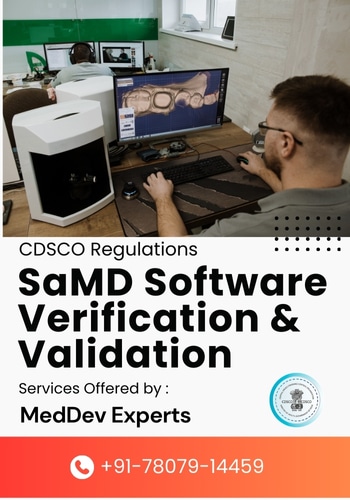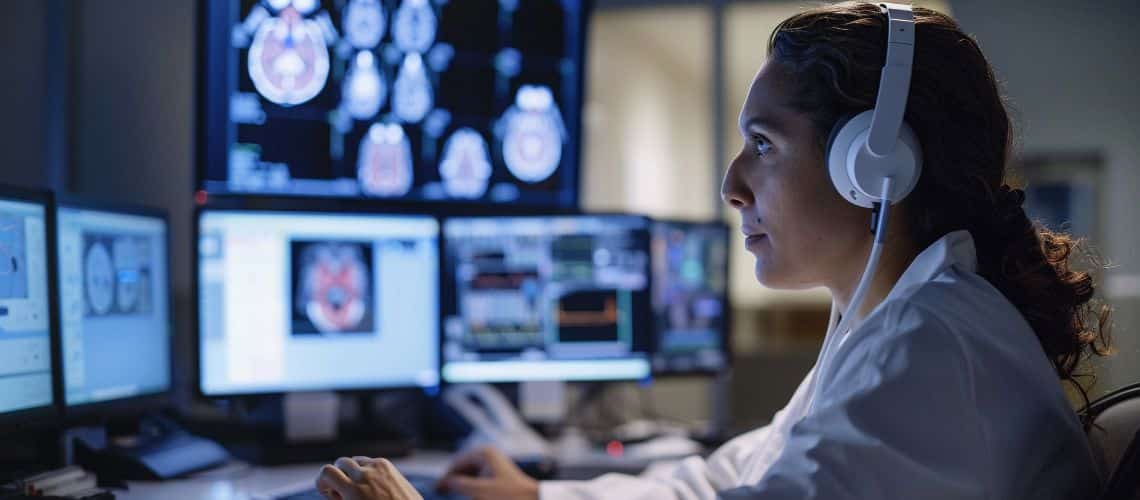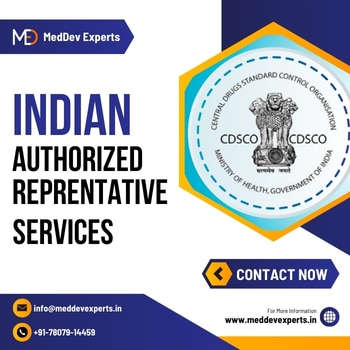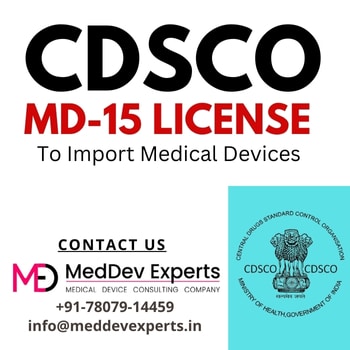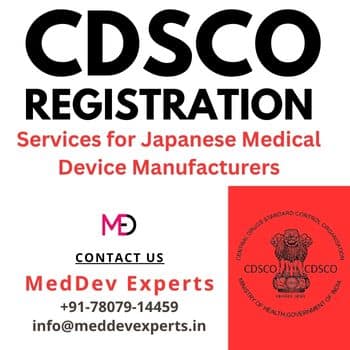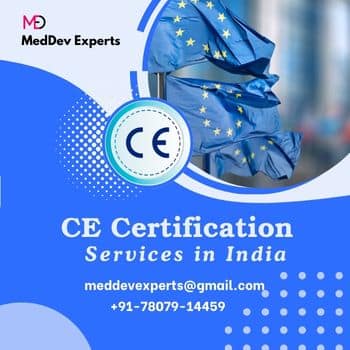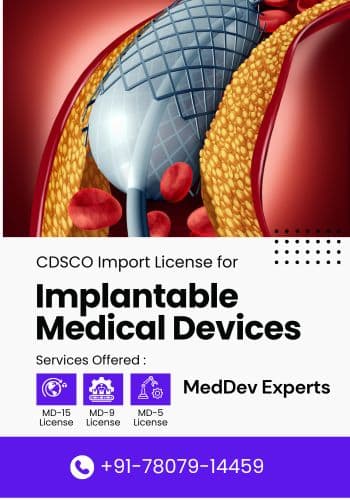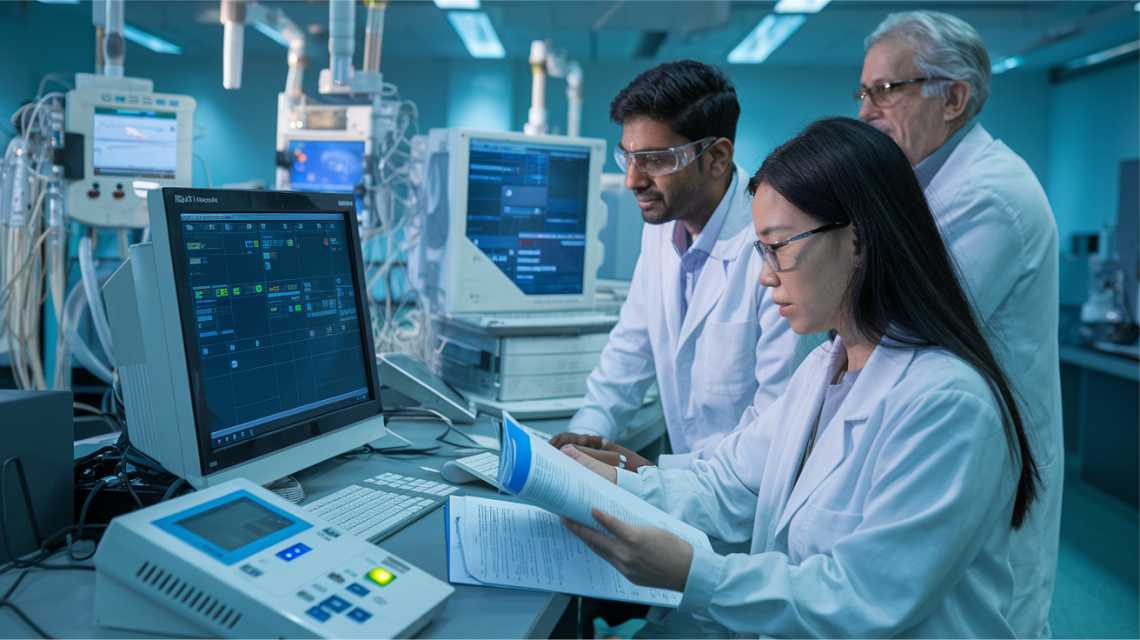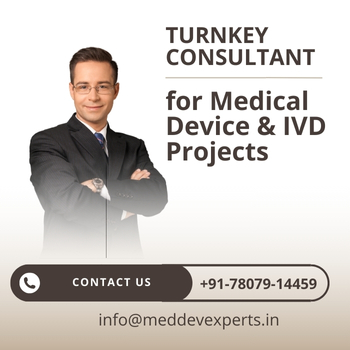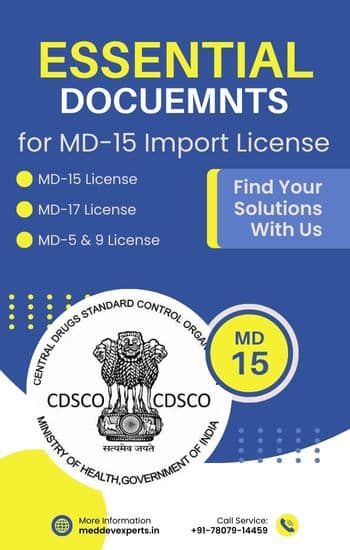CDSCO SaMD Software Verification and Validation as per IEC 62304
In today’s rapidly evolving healthcare landscape, Software as Medical Device (SaMD) is revolutionizing patient care through innovative diagnostic and therapeutic applications. But with this innovation comes significant regulatory challenges – especially in India, where the Central Drugs Standard Control Organization (CDSCO) has recently transitioned from registration to a more stringent licensing system for Class B, C and D medical devices. For developers and manufacturers, navigating these complex verification requirements can be the difference between market success and costly delays.
The stakes couldn’t be higher. When software directly impacts clinical decisions and patient outcomes, thorough verification and validation aren’t just regulatory checkboxes – they’re essential safeguards. With CDSCO’s updated framework aligning with international standards like IEC 62304, companies now face the dual challenge of ensuring software quality while preparing comprehensive documentation for licensing applications through the SUGAM portal. In this guide, we’ll explore the entire spectrum of CDSCO SaMD regulations, from understanding classification systems to mastering verification processes, and show you how MedDev Experts can transform compliance challenges into your competitive advantage.
Understanding Software as Medical Device (SaMD)
What is Software as Medical Device (SaMD)?
Software as Medical Device (SaMD) refers to software intended for medical purposes that operates independently of hardware medical devices. This includes applications designed for diagnosis, treatment, monitoring, or prevention of diseases or medical conditions. SaMD also encompasses in-vitro diagnostic (IVD) devices, which are specialized software solutions used in laboratory settings.
Unlike traditional medical devices, SaMD functions without being embedded in physical hardware dedicated to medical purposes. These software solutions can operate on general-purpose computing platforms such as smartphones, tablets, or cloud-based systems.
Regulatory Requirements Under Indian Medical Device Rules, 2017
Under the Indian Medical Device Rules, 2017 (IMDR), Software as Medical Device is subject to stringent SaMD Software Verification and Validation (V&V) requirements. The Central Drugs Standard Control Organization (CDSCO) regulates SaMD in India, classifying them into different categories based on risk:
Class A and Class B: Lower risk SaMD, managed by State Licensing Authorities
Class C and Class D: Higher risk SaMD, directly regulated by CDSCO
The regulatory framework requires all SaMD to undergo comprehensive verification and validation processes before they can be registered and marketed in India. This includes obtaining appropriate licenses (MD 5 for Class A/B or MD 9 for Class C/D) depending on the risk classification.
Importance of SaMD Software Verification and Validation for Safety and Compliance
Under the Indian Medical Device Rules, 2017 (IMDR), Software as Medical Device is subject to stringent verification and validation (V&V) requirements. The Central Drugs Standard Control Organization (CDSCO) regulates SaMD in India, classifying them into different categories based on risk:
The software performs as intended and meets all specified requirements
Potential risks to patient safety are identified and mitigated
The software maintains consistent performance across different operating environments
The product complies with all applicable regulatory standards
By implementing robust SaMD software Validation & Verification protocols, manufacturers not only ensure regulatory compliance but also enhance the safety and efficacy assurance that healthcare providers and patients rely on. This comprehensive approach to quality management mitigates legal risks and fosters accountability in healthcare delivery systems.
CDSCO Regulatory Framework for SaMD in India
A. Classification system: Class A, B, C, and D devices
SaMD in India is categorized into four risk-based classifications:
Class A (Low Risk): Basic software with minimal patient safety concerns
Class B (Low-Moderate Risk): Software with moderate monitoring or diagnostic functions
Class C (Moderate Risk): Software that provides critical diagnostic information or monitors vital parameters
Class D (High Risk): Software directly involved in critical care decisions or life-sustaining functions
Each classification determines the level of regulatory scrutiny and compliance requirements. The higher the risk category, the more stringent the regulatory oversight.
B. Regulatory jurisdiction: State vs. CDSCO oversight
The regulatory jurisdiction for SaMD approval depends on its risk classification:
State Licensing Authorities: Responsible for Class A and Class B devices. Central Licensing Authority (CDSCO): Oversees Class C and Class D devices.
For importing SaMD into India, an MD 15 Import Registration is mandatory regardless of classification. All registrations remain valid indefinitely, subject to retention fees payable every five years.
C. Recent regulatory changes (October 2023 transition to licensing)
The regulatory landscape for SaMD in India has evolved significantly, with CDSCO expanding the definition of medical devices to include software used for diagnosis, monitoring, and treatment. The Medical Device Rules of 2017 form the cornerstone of these regulations, complemented by international standards like ISO 13485:2016 for quality management and IEC 62304 for software lifecycle processes.
As of October 2023, SaMD has transitioned to a comprehensive licensing system. This change requires manufacturers to enroll on the SUGAM Portal and submit extensive documentation, including organization identity verification, facility details, and technical capability evidence. Following submission, a CDSCO audit verifies compliance before license issuance.
This licensing framework not only ensures regulatory compliance but also enhances safety assurances for healthcare providers and patients while mitigating legal risks.
With this regulatory framework in mind, next we’ll examine why verification and validation are essential components for SaMD compliance and patient safety.
Why SaMD Software Verification and Validation is Essential
Now that we’ve examined the CDSCO regulatory framework for SaMD in India, it’s crucial to understand why verification and validation (V&V) processes are not just recommended but essential for SaMD products.
Regulatory mandate under Medical Device Rules
The Indian Medical Device Rules (IMDR) explicitly mandates verification and validation for all medical device software. This requirement ensures that SaMD products meet stringent quality standards before market approval. Companies developing SaMD must demonstrate comprehensive testing and provide objective evidence that their software performs as intended in accordance with CDSCO guidelines.
Compliance with IEC 62304 (Software Life Cycle)
Following the IEC 62304 standard for software life cycle processes is fundamental for SaMD development. This international standard outlines systematic approaches to software development, verification, and validation. For SaMD products, proper V&V activities must be planned early in development, especially for complex projects involving machine learning or AI algorithms. Independent review principles emphasized in IEC 62304 may necessitate third-party validation for some organizations to ensure objectivity.
Importance for Device Master File (DMF) preparation
V&V documentation forms a critical component of the Device Master File (DMF) required by CDSCO. Without thorough verification and validation records, the DMF will be considered incomplete, potentially delaying or preventing regulatory approval. Detailed testing protocols, validation metrics, and completed test reports must be included to demonstrate that the software meets both technical specifications and user needs.
Reducing product risk, ensuring functional correctness, and enhancing patient safety
The V&V process serves as a fundamental risk management tool for SaMD. Through comprehensive verification (including unit, integrated, and system testing) and validation (proving the software meets user needs and intended uses), manufacturers can identify and address potential issues before they impact patients. This is particularly crucial for software utilizing AI and machine learning algorithms, where performance validation requires specialized metrics and expert evaluation to ensure reliable operation in clinical settings.
With these verification and validation essentials in mind, next we’ll examine the specific licensing process for SaMD in India, which builds upon these V&V requirements.
Licensing Process for SaMD in India
Now that we’ve explored why verification and validation are crucial for Software as Medical Device (SaMD), let’s examine the practical aspects of obtaining licensing in India through the established regulatory framework.
A. Application process through SUGAM Portal
The CDSCO has implemented the SUGAM portal as a comprehensive platform to streamline the licensing process for SaMD in India. This portal establishes a database that tracks permissions and licenses issued by State Food and Drug Administrations. The application process begins with enrollment on the SUGAM Portal, where manufacturers can:
Create an account on the CDSCO portal
Select the appropriate registration purpose
Fill in the necessary details for their SaMD application
Upload required documentation
Submit the application and monitor its status online
The SUGAM initiative, launched by the Indian drug regulatory authority, has significantly improved efficiency by creating a nearly paperless process.
B. Documentation requirements and submission protocols
When applying for SaMD licensing through the SUGAM portal, manufacturers must submit comprehensive documentation that includes:
Organizational proof (identity documents)
Premises documentation
ISO certifications
Technical staff credentials
Quality management system documentation
A signed undertaking
Address proof
Technical information about the software
The submission protocol follows a structured approach, requiring applicants to complete the appropriate forms based on their SaMD classification. After documentation submission, an audit is conducted by the CDSCO team to verify compliance with quality management systems and regulatory requirements.
C. Licensing fees and validity periods
The licensing fees for SaMD in India vary according to the device classification:
| SaMD Class | Licensing Fee | Licensing Authority |
|---|---|---|
| Class A & B | ₹5,000 per License + ₹500 per SaMD | State Licensing Authorities (MD 5 License) |
| Class C & D | ₹50,000 per License + ₹1,000 per SaMD | CDSCO (MD 9 License) |
| Import Registration | Varies | CDSCO (MD 15 License) |
Additional costs may apply for distinct software applications. While the registration remains valid indefinitely, manufacturers must pay a retention fee every five years to maintain their license status.
With a clear understanding of the licensing process for SaMD in India, let’s next explore how MedDev Experts can assist with verification and validation services to ensure your software meets all regulatory requirements and achieves successful licensing.
MedDev Experts' SaMD Software Verification and Validation Services
Now that we’ve explored the CDSCO licensing process for SaMD in India, let’s examine how MedDev Experts provides specialized SaMD Software Verification and Validation services to ensure your software meets all regulatory requirements.
Software Requirements Review
Our experts meticulously analyze your software requirements, ensuring complete traceability to intended use and comprehensive risk management. This critical step helps identify potential patient safety concerns early in the development process, aligning with CDSCO’s emphasis on software quality in medical devices.
Static Code Analysis & Code Reviews
We conduct thorough code examinations using both manual review and advanced tools to detect errors, security vulnerabilities, and verify adherence to coding standards. This helps prevent issues that could compromise the safety and effectiveness of your SaMD product.
Unit Testing
Our specialized team tests individual software modules independently to ensure each component functions as designed. This granular testing approach is essential for all SaMD classifications, from Class A through Class D.
Integration Testing
We verify that combined software modules work together seamlessly, identifying any interface issues that might arise when components interact within your medical software system.
System Testing
Our comprehensive validation process tests the complete software against all specified requirements, ensuring the entire system functions correctly before submission to regulatory authorities.
User Acceptance Testing (UAT)
We implement testing based on real-life clinical scenarios, simulating how healthcare providers will use your software in practice. This helps identify usability issues that might affect patient safety.
Test Plan & Protocol Development
Based on your device’s risk profile and classification (A, B, C, or D), we develop custom test scripts and protocols that address the specific regulatory requirements for your SaMD category.
Traceability Matrix
We create comprehensive documentation ensuring every software requirement is thoroughly tested and properly documented, providing the evidence needed for CDSCO submission and registration on the SUGAM Portal.
With these services, we help navigate the complex verification and validation landscape. Next, we’ll explore the compliance standards MedDev Experts follows to ensure your SaMD meets all regulatory requirements for successful CDSCO registration.
Compliance Standards MedDev Experts Follows
IEC 62304 – Software Life Cycle Processes
Look, when it comes to medical software development, you can’t just wing it. IEC 62304 is the gold standard for a reason. It breaks down the entire software lifecycle into manageable chunks – from planning to maintenance.
At MedDev Experts, we don’t just “follow” this standard – we live by it. Every line of code we write undergoes strict validation. Our documentation is meticulous because we know that in SaMD development, cutting corners isn’t an option.
The standard classifies software based on risk (A, B, C), and we adjust our processes accordingly. Higher risk? More rigorous testing. Simple as that.
ISO 13485 – QMS for Medical Devices
Quality isn’t just a checkbox for us – it’s our foundation. ISO 13485 provides the framework for our entire quality management system.
What sets us apart? We’ve tailored our QMS specifically for software as a medical device. This means thorough documentation, consistent training, and regular internal audits.
Our change control process is airtight. Nothing gets implemented without proper validation. When CDSCO comes knocking, our clients sleep easy knowing their documentation is bulletproof.
ISO 14971 – Risk Management
Medical software carries risks. Ignoring them isn’t an option.
We implement ISO 14971 from day one of development. Our risk management files identify every potential hazard, evaluate each risk, and implement necessary controls.
The beauty of our approach? Risk management isn’t a one-time activity but integrated throughout the product lifecycle.
IMDR 2017, Schedule M-III – CDSCO SaMD Compliance
The Indian regulations can be tricky to navigate. Schedule M-III under IMDR 2017 sets specific requirements for medical software in India.
We’ve mastered these requirements. From technical documentation to clinical evaluation expectations, our processes align perfectly with CDSCO’s demands.
FDA/CE Compliant
Got global ambitions? We’ve got you covered.
For clients eyeing international markets, we ensure compliance with FDA’s Pre-Cert program and EU MDR requirements. Our dual-compliance approach means you’re building for both Indian and global standards simultaneously – saving you time and resources down the line.
Deliverables You Receive
SaMD Software Verification and Validation Plan
Ever ordered a custom-made suit? The SaMD Software Verification and Validation Plan works like your tailor’s measurement sheet – it maps out exactly how we’ll test your software to ensure it meets CDSCO requirements. You’ll receive a comprehensive document detailing:
Test strategies aligned with regulatory standards
Testing environments and tools we’ll use
Risk-based approach to verification activities
Schedule and responsibilities of testing teams
This isn’t just paperwork – it’s your roadmap showing how we’ll methodically verify your SaMD performs exactly as intended.
SaMD Software Verification and Validation Protocols & Reports
These are your proof that testing wasn’t random but followed a structured approach. The protocols outline test cases covering every software function, while reports document actual results. Each test case is designed to verify specific requirements, capturing:
- Expected vs. actual outcomes
- Pass/fail criteria
- Testing evidence (screenshots, data logs)
When regulators ask “how do you know it works?” – these documents provide your answer.
Traceability Matrix
Think of this as your software’s family tree. The matrix connects each requirement to its corresponding:
Design specifications
Code implementations
Test cases
Validation results
If a CDSCO reviewer questions any feature, you can instantly show how it was implemented and tested.
Defect Reports & Resolution Logs
No software development is perfect. What matters is how issues are handled. These logs document:
Issues discovered during testing
Severity classifications
Resolution approaches
Verification of fixes
This transparency demonstrates your quality control process.
Final SaMD Software Verification and Validation Summary Report for CDSCO submission
This is your executive summary – the document that ties everything together for regulatory review. It provides:
Overall verification results
Risk assessment outcomes
Statement of compliance
Signatures of responsible parties
It’s the culmination of the verification process, ready for submission to CDSCO.
Who Should Avail Our Service
Indian startups and companies developing SaMD
You’ve built an amazing healthcare software solution and now face the regulatory maze. CDSCO verification isn’t just a checkbox—it’s your ticket to market legitimacy. Without proper verification, you risk delays, rejections, and potentially harmful products reaching patients. Our service guides you through every verification step, helping you navigate the complex regulatory requirements while maintaining your innovation timeline.
IT companies entering digital health
Breaking into healthcare isn’t like launching another app. The stakes are higher, the regulations stricter. Your team might excel at coding, but do they understand CDSCO’s specific requirements for medical software? We bridge that expertise gap. We’ve helped dozens of IT companies transition smoothly into the healthcare space, ensuring their software meets safety standards without endless revision cycles or costly mistakes.
Healthcare institutions building AI-based diagnostics
Your AI diagnostic tool could revolutionize patient care—but only if it gets approved. We know the unique challenges healthcare institutions face when developing AI-based diagnostics. The verification process for these complex systems requires specialized expertise in both regulatory compliance and advanced technology validation. We’ll help you demonstrate the safety and effectiveness of your AI solutions to regulatory authorities.
Manufacturers preparing for CDSCO registration
The registration finish line is in sight, but verification hurdles stand in your way. You’ve invested too much to stumble now. Our service identifies potential compliance issues before they become registration roadblocks. We’ve guided manufacturers through hundreds of successful registrations, turning technical documentation into approval-winning submissions that speak the language regulators expect.
Our Differentiators
Team with regulatory and technical expertise
Getting your SaMD approved by CDSCO isn’t just about checking boxes. You need people who understand both the regulatory maze AND the technical bits. Our team brings that rare combination to the table.
We’ve got regulatory experts who speak CDSCO fluently – they know exactly what the regulators are looking for in your verification documentation. But unlike most consultants, we’ve also got software engineers who understand the nitty-gritty of medical software development.
This combo means we catch issues others miss. When your developer says “the software has been validated” – our team knows exactly what questions to ask to make sure it actually meets CDSCO’s expectations.
Experience with CDSCO submissions
We’ve been down this road many times. Our team has successfully guided dozens of SaMD products through CDSCO’s verification process.
From low-risk diagnostic support tools to complex therapeutic algorithms, we’ve handled submissions across all risk categories. This experience means we’ve already tackled most challenges you’ll face.
Fast turnaround & flexible engagement models
Need help yesterday? We get it. We offer:
Quick assessments of submission readiness
Rapid gap analysis of existing documentation
Flexible consultation options (hourly, project-based, or retainer)
No lengthy onboarding or rigid processes. We adapt to your timeline, not the other way around.
End-to-end support from development to licensing
Why juggle multiple vendors when you can have one partner? We support you from initial code development through post-market surveillance:
Software verification planning
Test protocol development
Execution support
Documentation preparation
Submission strategy
Regulatory response management
The result? A smoother path to approval with fewer surprises along the way.
Ready to Navigate CDSCO SaMD Requirements?
Get Expert Help Now
Stuck in the complex world of software verification for your medical device? You’re not alone. The CDSCO SaMD verification process can feel like walking through a maze blindfolded.
Meet With MedDev Experts for a Free Consultation
Why struggle with India’s regulatory requirements when you can talk to someone who navigates them daily?
Our SaMD regulatory specialists have guided dozens of companies through CDSCO verification processes. During your free 30-minute consultation, we’ll:
Review your current SaMD documentation
Identify potential verification gaps
Suggest practical next steps tailored to your device
Explain how CDSCO requirements differ from other markets
Answer your pressing regulatory questions
The verification process doesn’t have to be overwhelming. One conversation with our experts can save you months of back-and-forth with regulators.
Book your free consultation today and turn regulatory hurdles into stepping stones for your SaMD success in the Indian market.
Navigating the CDSCO regulatory framework for Software as Medical Devices requires expertise and precision to ensure compliance with India’s stringent standards. From understanding SaMD classification to completing the verification and validation processes, each step plays a critical role in obtaining the necessary licenses for your medical software. MedDev Experts offers comprehensive services tailored to guide you through this complex landscape, delivering all required documentation while adhering to international compliance standards.
Whether you’re developing Class A and B devices requiring state licensing or more complex Class C and D products under CDSCO’s direct supervision, our team stands ready to support your regulatory journey. Don’t let compliance challenges delay your market entry or compromise your product safety. Contact MedDev Experts today to leverage our industry expertise and streamline your SaMD verification process, ensuring your innovative medical software reaches healthcare providers and patients with full regulatory approval.

